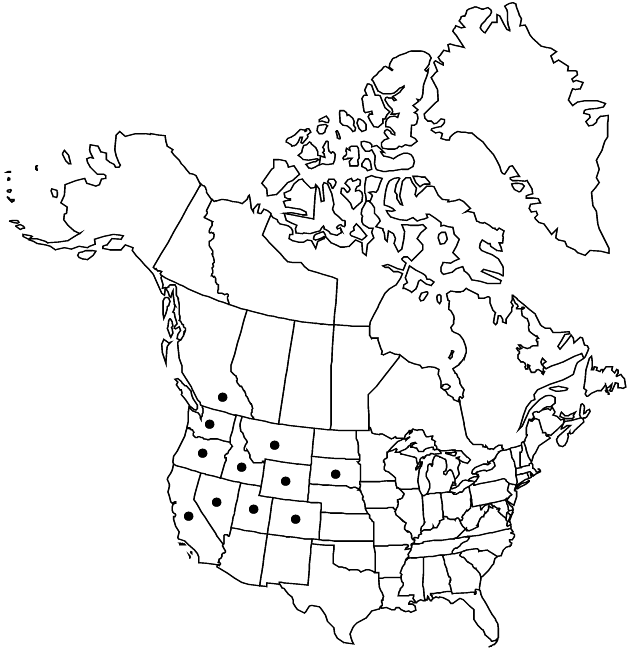Senecio hydrophilus
Trans. Amer. Philos. Soc., n. s. 7: 411. 1841.
Synonyms: Senecio hydrophilus var. pacificus Greene
Revision as of 00:30, 27 July 2019 by FNA>Volume Importer
Perennials (biennials?), 40–100(–200) cm (caudices foreshortened, roots fleshy-fibrous). Herbage (often sea-green, usually glaucous) glabrous. Stems single or 2–4 loosely clustered. Leaves progressively reduced distally; ± petiolate; blades elliptic to oblanceolate, 5–20+ × (1–)2–10 cm, bases tapered, margins denticulate or entire (mid and distal leaves sessile, bractlike). Heads 20–40(–80+) in compound corymbiform arrays. Calyculi of 2–4+ bractlets (less than 2 mm). Phyllaries ± 8 or ± 13, 5–8 mm, tips frequently black. Ray florets (0) ca. 5; corolla laminae 3–5 mm. Cypselae glabrous. 2n = 40.
Phenology: Flowering spring–early summer.
Habitat: Marshes, swampy places, standing water, alkaline sites
Elevation: (0–)200–2500 m
Distribution

B.C., Calif., Colo., Idaho, Mont., Nev., Oreg., S.Dak., Utah, Wash., Wyo.
Discussion
Selected References
None.
Lower Taxa
None.